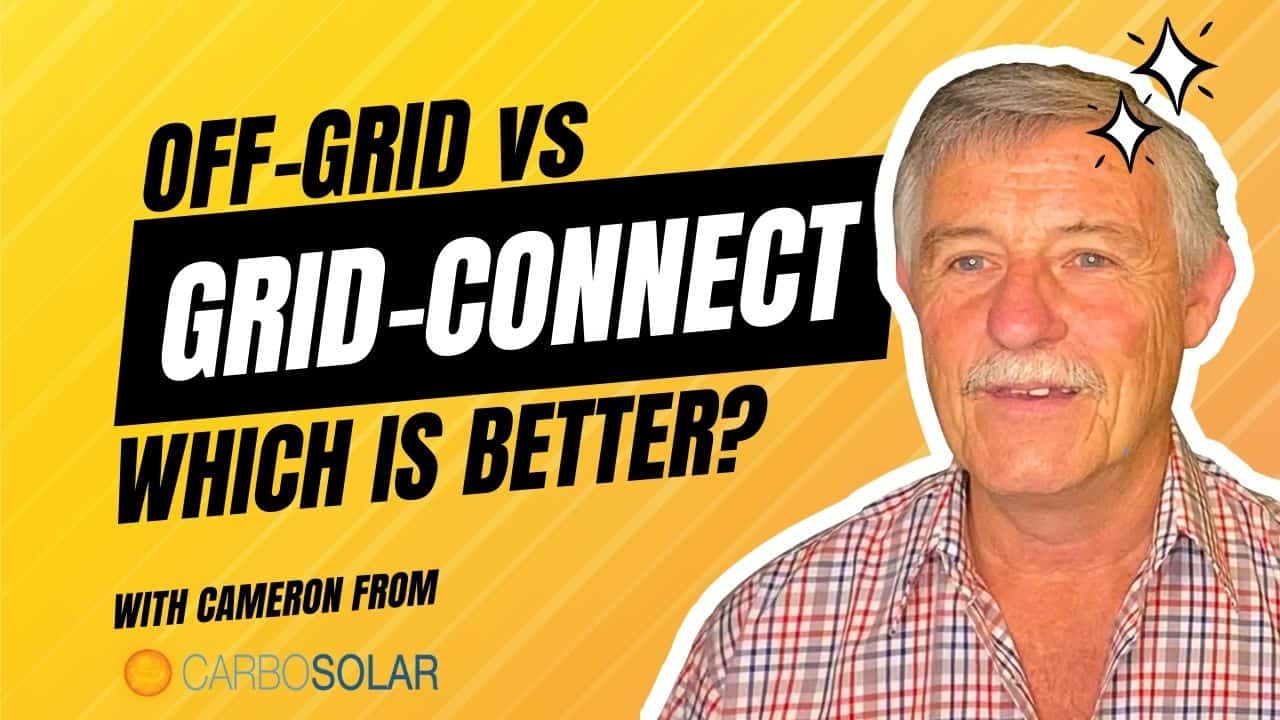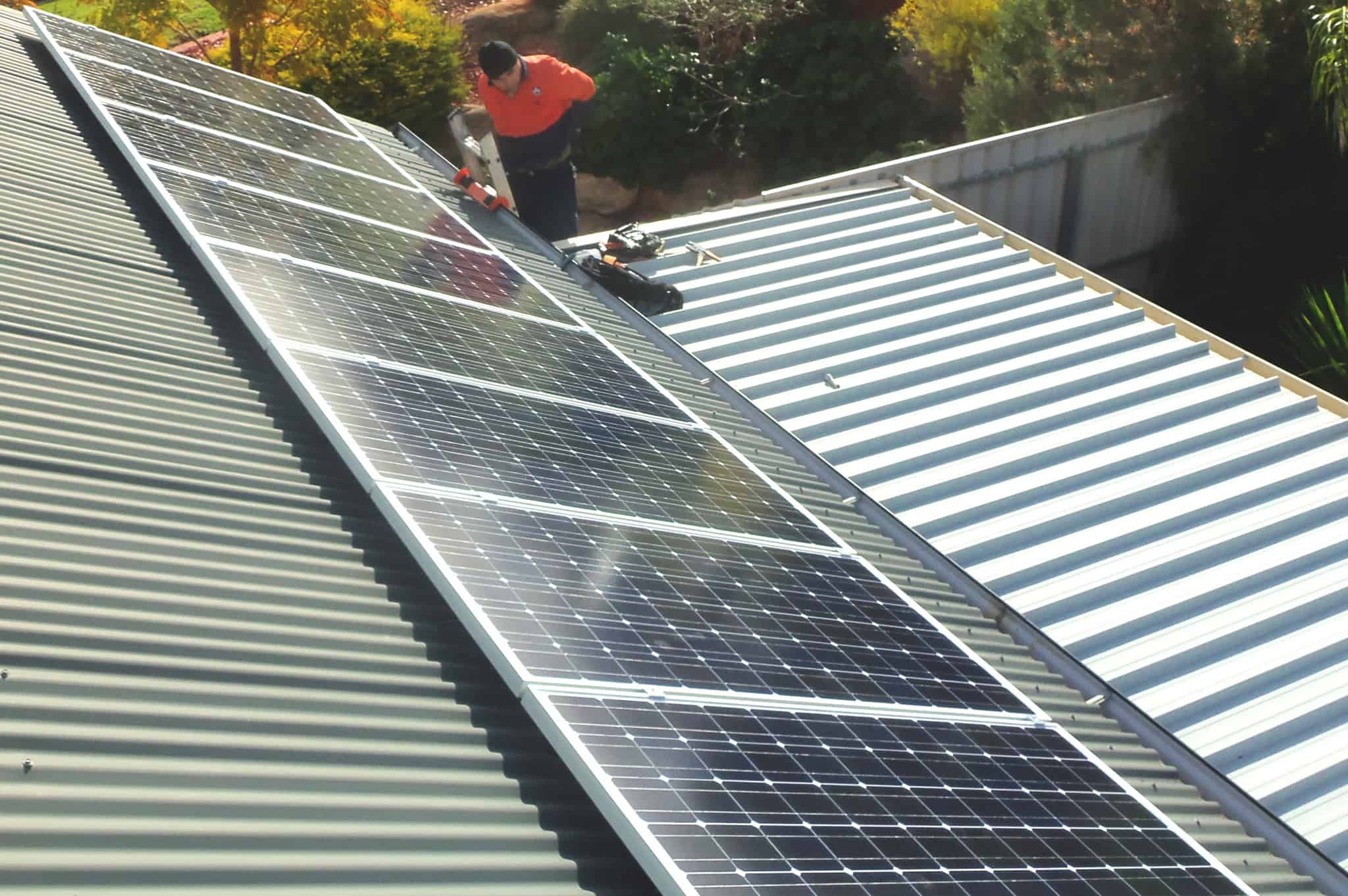
Good morning. Cameron, back again from Carbo Solar.
I’ve had numerous people been getting in touch with me, asking me about off-grid systems.
Should they install a solar panel system with a grid-connected inverter and use the emergency power from that grid-connected inverter to be able to supply their home with energy when the mains goes off, and then maybe later on, they completely turn the mains off and go off-grid.
Well, the answer to that is no, because a grid-connected battery system has a current limit. How many watts it can supply.
Most grid-connected battery systems can only supply on a single phase, up to about 21 amps at any one point in time 4800, 4900 watts of power. If you think of your kettle at 2400, 10 amps, you can see that is a bit of a limited supply.
Put an air conditioner on with a fridge freezer, a couple of lights you’re up to that limit. Emergency supply is only for an emergency, so you can go down the road of having a grid-connected battery with emergency supply. It will get you out of trouble. You’ve always got the grid there as I as a secondary, and in most cases people get very little electricity bills, sometimes no bill at all.
That’s that system.
Off-grid system is totally different. It runs a different way. It operates a different way. And it’s sized to suit the needs of the home. And sometimes to the individuals. For example, an off-grid system, instead of putting 6.6 kilowatt of solar panels on the roof, I would probably put 15 or 18 kilowatt of solar panels on the roof because it doesn’t go to an inverter, it goes to a charge controller, and a charge controller come in different sizes, varying sizes.
You can get two trackers, four trackers, or combinations of.
They then supply 48 volt to whatever you’ve got, hooked up to some heap of batteries, and you would probably have more batteries on a standalone than what most grid-connected battery systems would operate at.
In general, mine are smaller size would be 20 kilowatt let’s say. That would be the smallest.
I think more commonly these days, I’m doing 24 kilowatt plus with batteries in off-grid.
The solar panels would not be 6.6 kilowatts. 18 to 20 kilowatts of solar panels would be normal for an off-grid.
We would then have other things like a change-over switch. So in the event of there being problems, the batteries are low, been inclement weather for greater than four days, and still operate without a generator.
But if the weather is really bad, well then I often put in a change-over switch, allowing them to use a generator on a limited supply to get them out of trouble while their batteries are charging.
I found that to be most successful without having it fully automated.
Fully automated systems have their own pitfalls and issues. If you asked me out to go through all of this, I can then discuss that and tell you all the bits and pieces of them.





